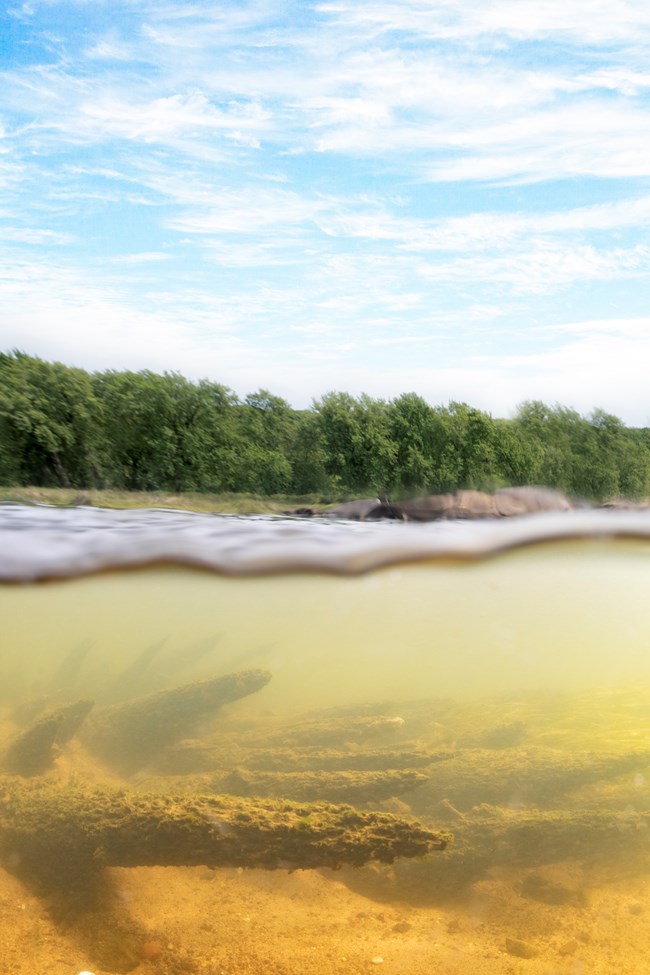Last updated: January 21, 2022
Article
More than Meets the Eye: Cultural Resources at a Wild and Scenic River
Content submitted by: Jonathan Moore, Cultural Resources Program Manager, St. Croix National Scenic Riverway (MN/WI)

NPS/Andy Jalbert
If visitors to the St. Croix National Scenic Riverway (Riverway) are asked to picture one of their favorite moments at this WSR, chances are they might describe a blue sky, a continuous band of trees and vegetation, and the healing sight and sound of water. Their vantage point may be from a favorite campsite, landing, or historic river town. Or their view could be seemingly void of human influence altogether and that may be what they appreciate most.

NPS/Andy Jalbert
Whether one can always detect evidence of past human activity or not, cultural resources at WSRs are often just around the next bend. Cultural resources is the term NPS uses to refer to sites, landscapes, structures, and objects associated with past or present people or cultures. They may be the faint outline of prehistoric rock art on the cliff above one’s head or a floating log bearing the brand of a nineteenth-century logging company. Or they could be lurking beneath the surface. Consider the results of a 2015 NPS study that explored logging-era water control features on the Lower St. Croix River. Between St. Croix Falls, Wisconsin and Afton, Minnesota, nearly fifty historic water control features were observed, including wing dams, cribs, and revetments. To the unsuspecting eye, they may appear to be natural islands, sandbars, or rock piles. In actuality, they are remnants of manmade infrastructure from the river’s days as a commercial thoroughfare for log drives and steamboats.
Cultural resources that remain within the St. Croix and Namekagon Rivers are not mere leftovers from a bygone era, however, or elements that managed to eek past the river’s designation as a wild and scenic river. They are actually a vital and integral part of the Riverway. While we often associate a river’s water quality, natural character, and free-flowing condition with “wild and scenic” designation, Section 10(a) of the Wild and Scenic Rivers Act specifically calls out “esthetic, scenic, historic, archeologic, and scientific features” as worthy of protection and enhancement. Indeed, cultural is one of the six Outstandingly Remarkable Values (ORVs) for which the St. Croix and Namekagon Rivers were designated and around which they are managed, and the cultural ORV is present in all eleven segments of the Riverway. In concert with other values, cultural resources help make the Riverway the remarkable and special place visitors know and love today.
So next time you are hiking, fishing, or paddling at a WSR, take a moment to reflect at what may be waiting around the next bend or below the surface. It may be more than meets the eye!
